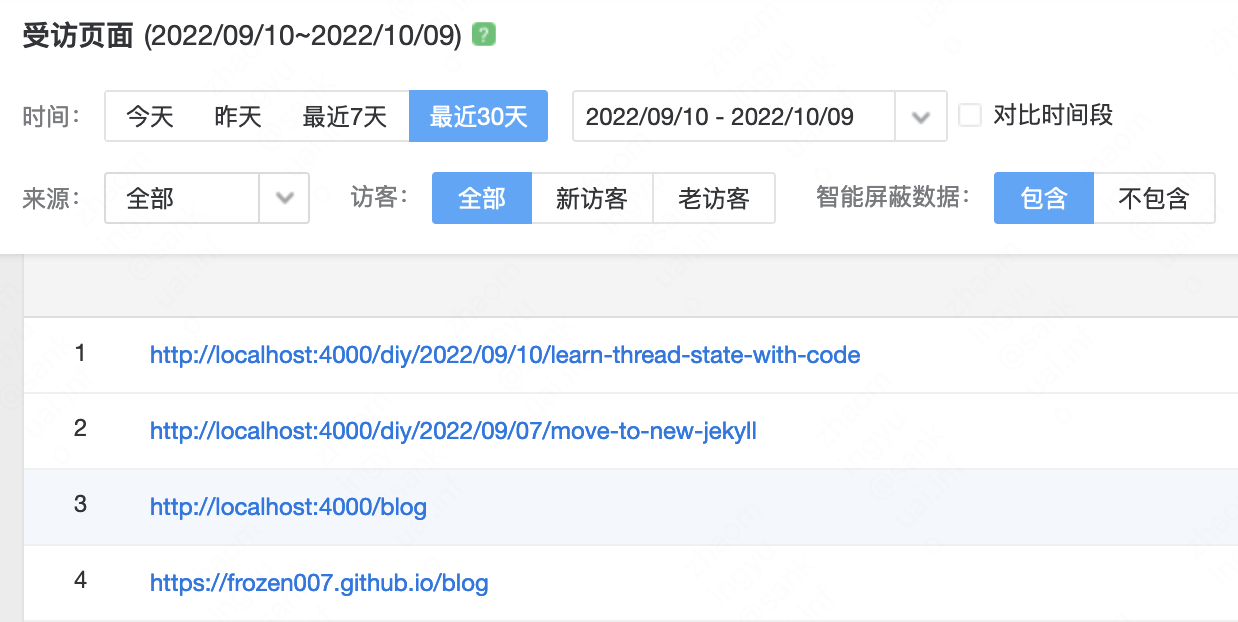jekyll本地调试技巧-识别开发环境与线上环境
Jekyll本地调试问题
在用Jekyll写blog时,经常需要在本地调试,查看渲染效果。
由于页面内嵌了百度统计和google统计的代码,在本地访问页面时也会在统计后台上留下记录:

为了避免统计localhost这类访问请求,在本地环境时不需要加载内嵌的统计代码。
如何区分不同环境
根据Jekyll的官方文档(Jekyll版本V4.2.2),可以有两种方式:
- 判断site.url
- 设置JEKYLL_ENV(推荐)
判断site.url
site.url1取值为_config.yml中配置的url属性,通常为线上环境的域名
# the base hostname & protocol for the site
url: "https://frozen007.github.io"
但在本地执行bundle exec jekyll serve时,site.url会设置为默认值:http://localhost:4000。
所以可以直接在内嵌统计代码的地方加入下面的判断:
{% unless site.url contains "localhost" %}
<!-- Baidu -->
<script>
var _hmt = _hmt || [];
(function() {
var hm = document.createElement("script");
hm.src = "https://hm.baidu.com/hm.js";
var s = document.getElementsByTagName("script")[0];
s.parentNode.insertBefore(hm, s);
})();
</script>
{% endunless %}
这样渲染出的页面中就不会有baidu统计的代码。
设置JEKYLL_ENV
在执行jeklly build 或 serve时,可以直接指定Jekyll环境变量:JEKYLL_ENV2
指定为production环境
bundle exec jekyll build JEKYLL_ENV=production
如果不指定JEKYLL_ENV,默认值为development
上面的内嵌代码也可以修改为下面的:
{% if jekyll.environment == "production" %}
<!-- Baidu -->
<script>
var _hmt = _hmt || [];
(function() {
var hm = document.createElement("script");
hm.src = "https://hm.baidu.com/hm.js";
var s = document.getElementsByTagName("script")[0];
s.parentNode.insertBefore(hm, s);
})();
</script>
{% endif %}

